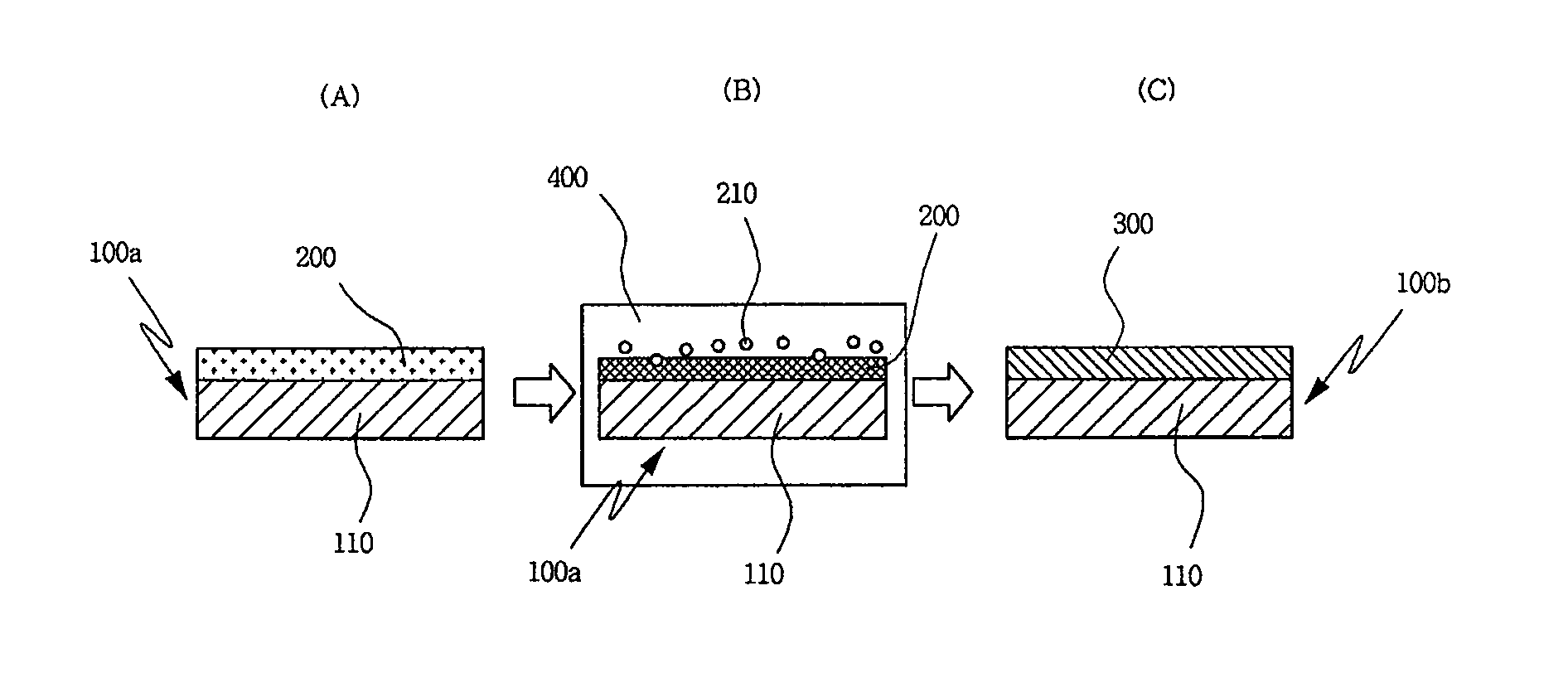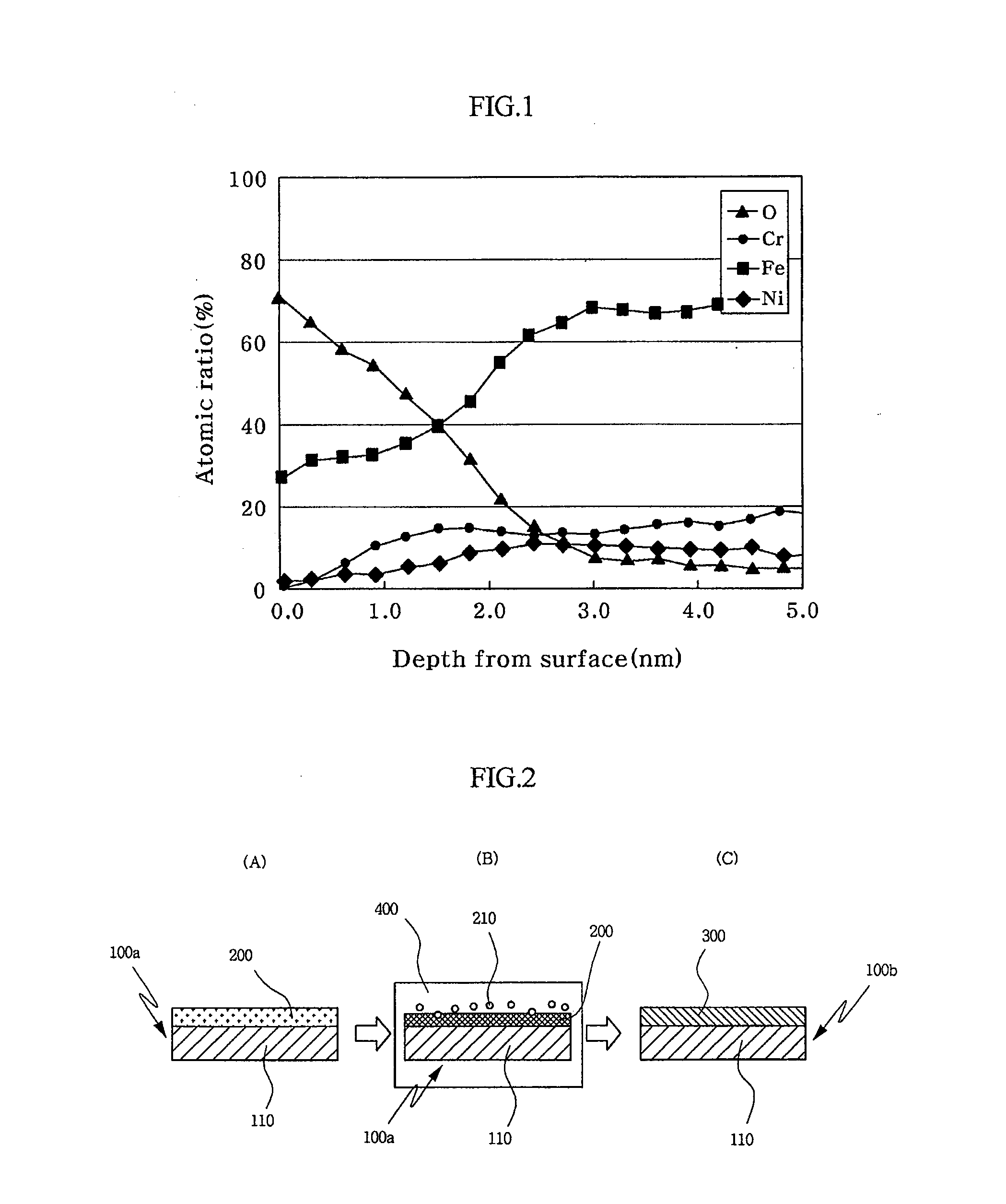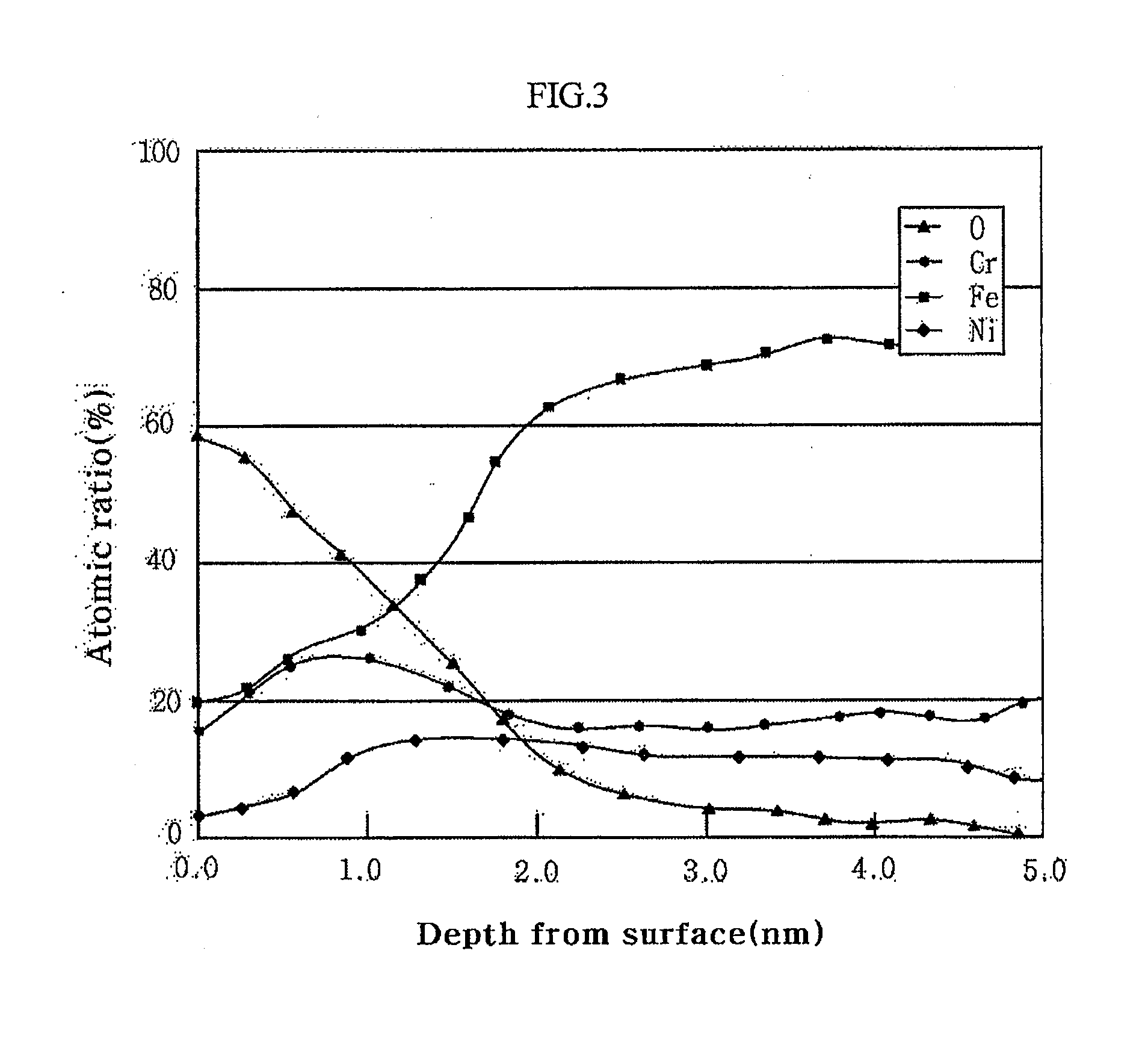Stainless stell separator for fuel cell and the manufacturing method thereof
a fuel cell and steel separator technology, applied in the direction of cell components, final product manufacturing, sustainable manufacturing/processing, etc., can solve the problems of high manufacturing cost, low practicability, and inability to use a single unit, so as to reduce manufacturing time and cost, improve corrosion resistance and electrical conductivity, and facilitate quality control
- Summary
- Abstract
- Description
- Claims
- Application Information
AI Technical Summary
Benefits of technology
Problems solved by technology
Method used
Image
Examples
Embodiment Construction
[0038]According to the present invention, a stainless steel sheet comprises 0.08 wt % carbon (C), 16˜28 wt % chrome (Cr), 0.1˜20 wt % nickel (Ni), 0.1˜6 wt % molybdenum (Mo), 0.1˜5 wt % tungsten (W), 0.1˜2 wt % tin (Sn), 0.1˜2 wt % copper, and the balance of iron (Fe) and other unavoidable impurities.
[0039]The stainless steel sheet is dipped into an etching solution for 30 seconds˜10 minutes to reduce processing time.
[0040]The stainless steel sheet has a passive film, of which Fe content is decreased by an operation of reducing the content of Fe in the passive film. Here, the passive film comprises 20˜75 wt % chrome (Cr) and 30 wt % or less iron (Fe) while satisfying a condition of (Cr+Ni) / Fe≧1 in terms of atomic weight.
[0041]Hereinafter, embodiments of the present invention will be described in detail with reference to the accompanying drawings.
[0042]FIG. 2 is a diagram schematically illustrating a process of manufacturing a stainless steel separator for a fuel cell with an etching...
PUM
| Property | Measurement | Unit |
|---|---|---|
| Temperature | aaaaa | aaaaa |
| Time | aaaaa | aaaaa |
| Electric potential / voltage | aaaaa | aaaaa |
Abstract
Description
Claims
Application Information
 Login to View More
Login to View More - R&D
- Intellectual Property
- Life Sciences
- Materials
- Tech Scout
- Unparalleled Data Quality
- Higher Quality Content
- 60% Fewer Hallucinations
Browse by: Latest US Patents, China's latest patents, Technical Efficacy Thesaurus, Application Domain, Technology Topic, Popular Technical Reports.
© 2025 PatSnap. All rights reserved.Legal|Privacy policy|Modern Slavery Act Transparency Statement|Sitemap|About US| Contact US: help@patsnap.com



